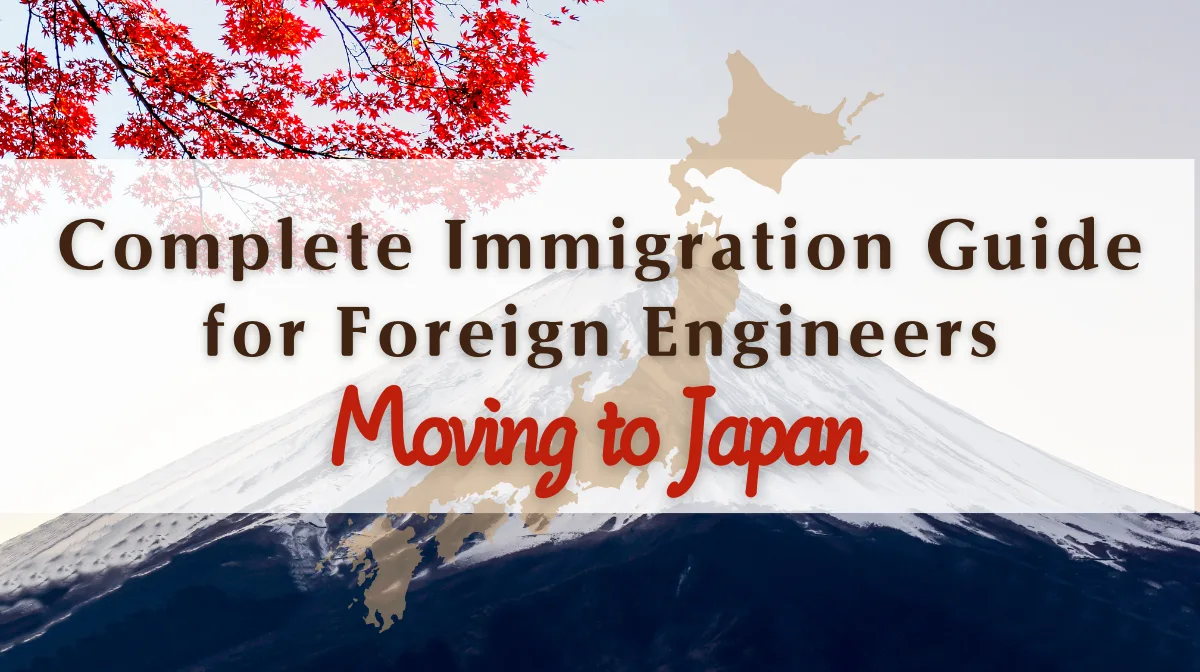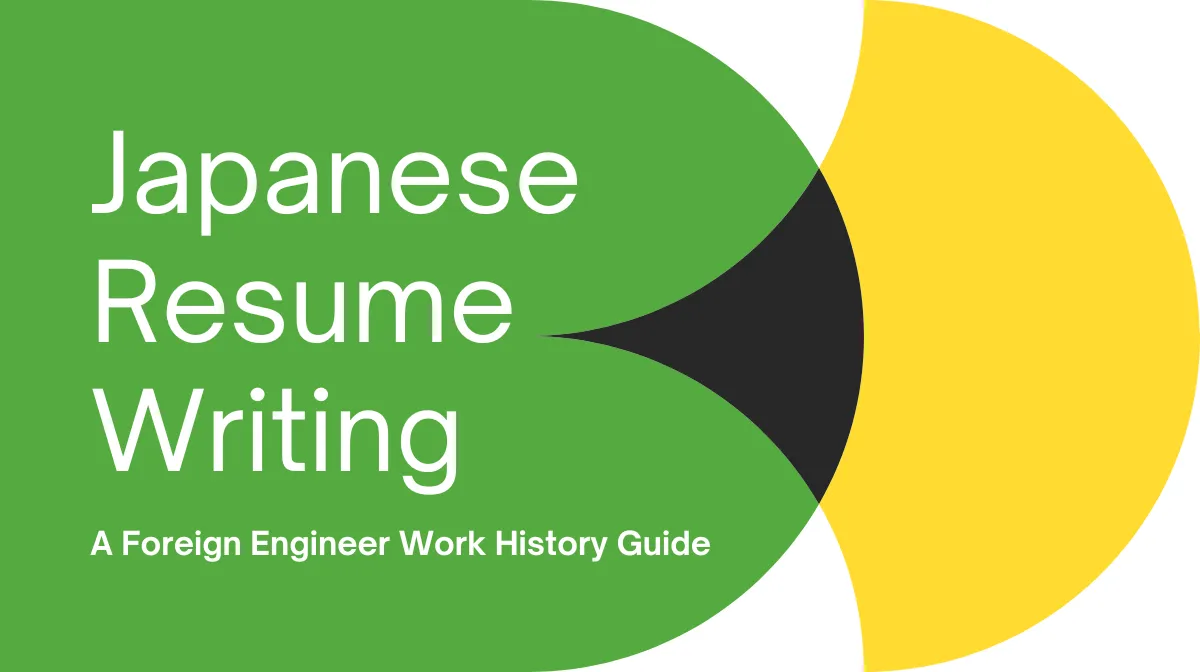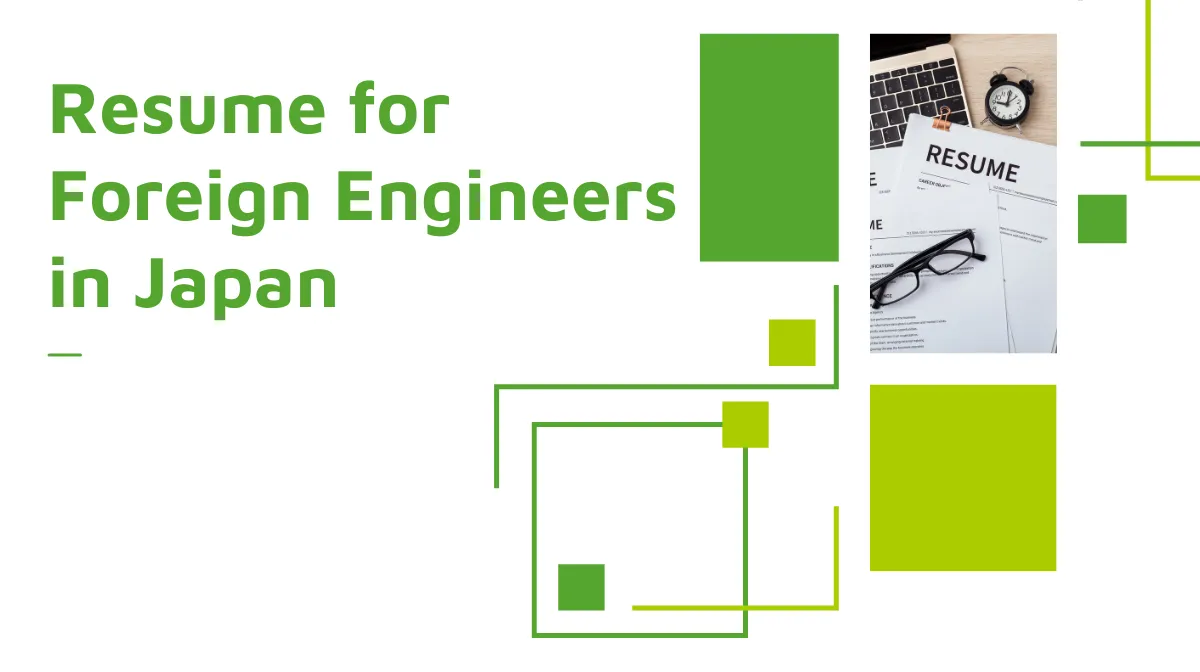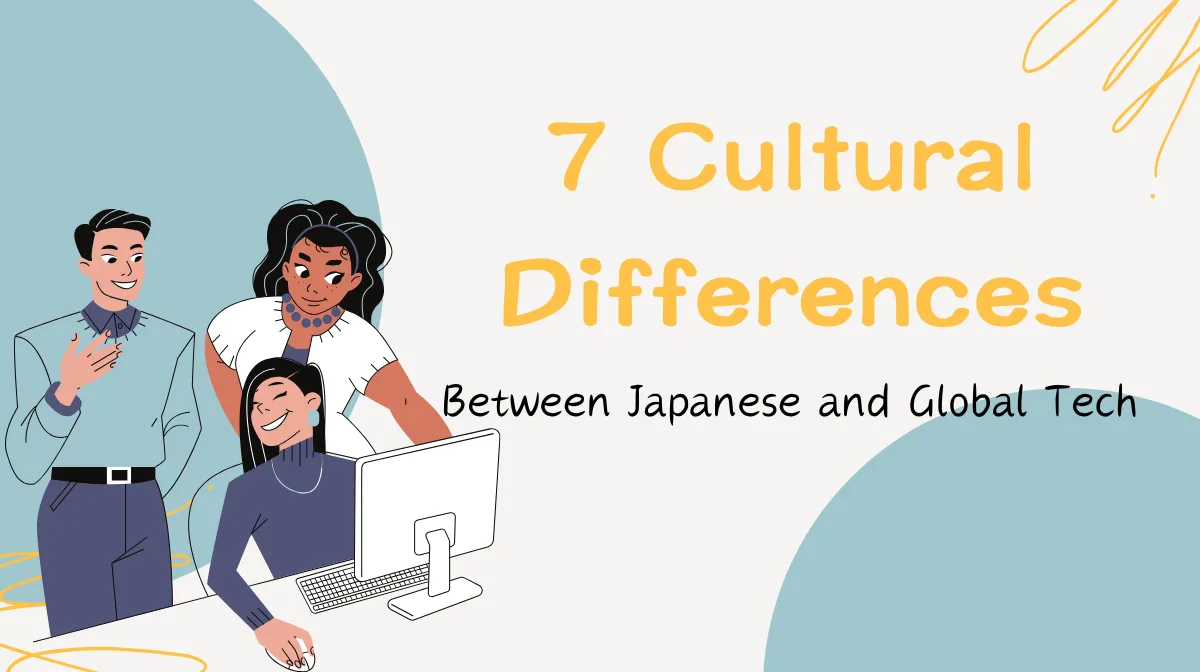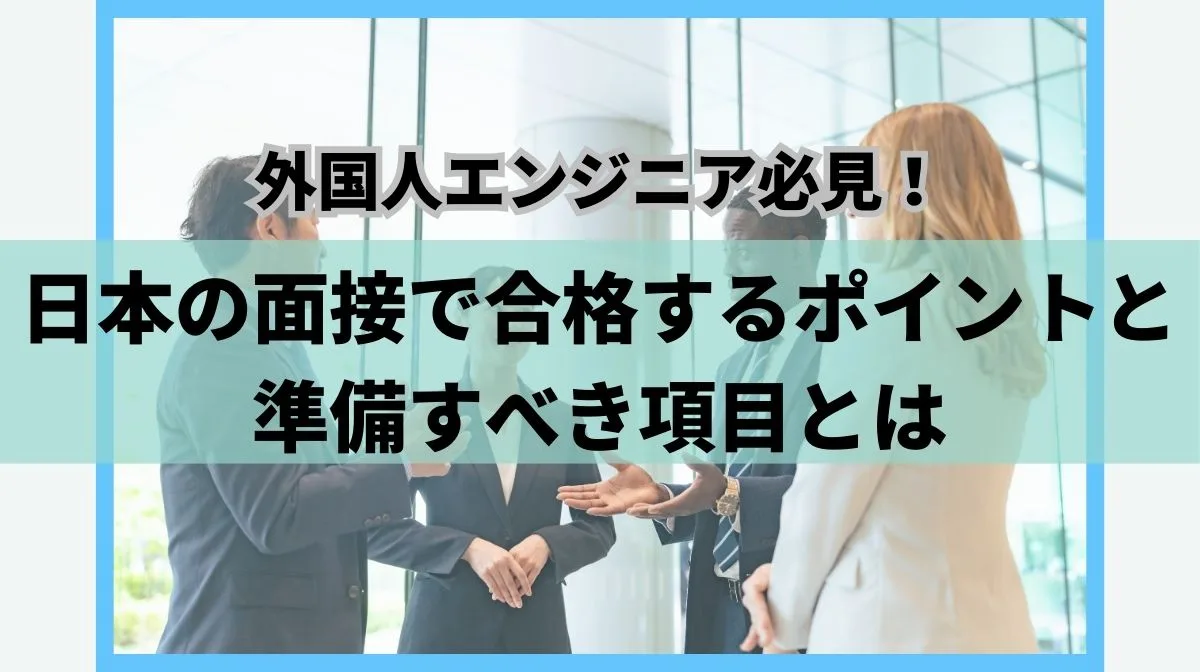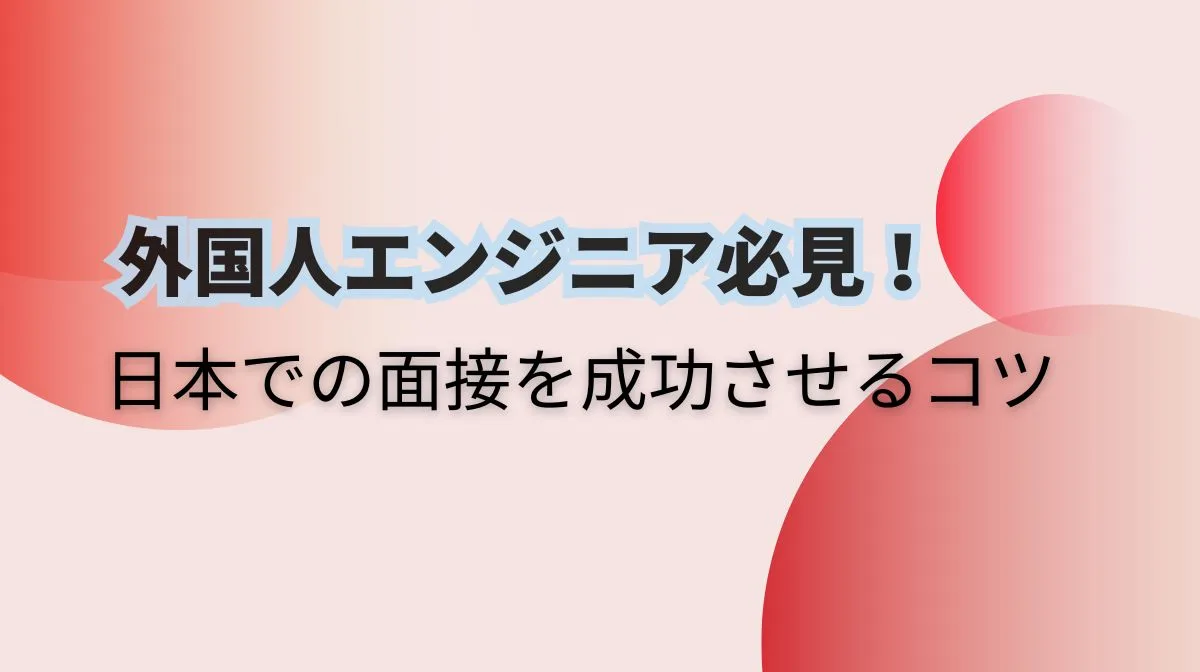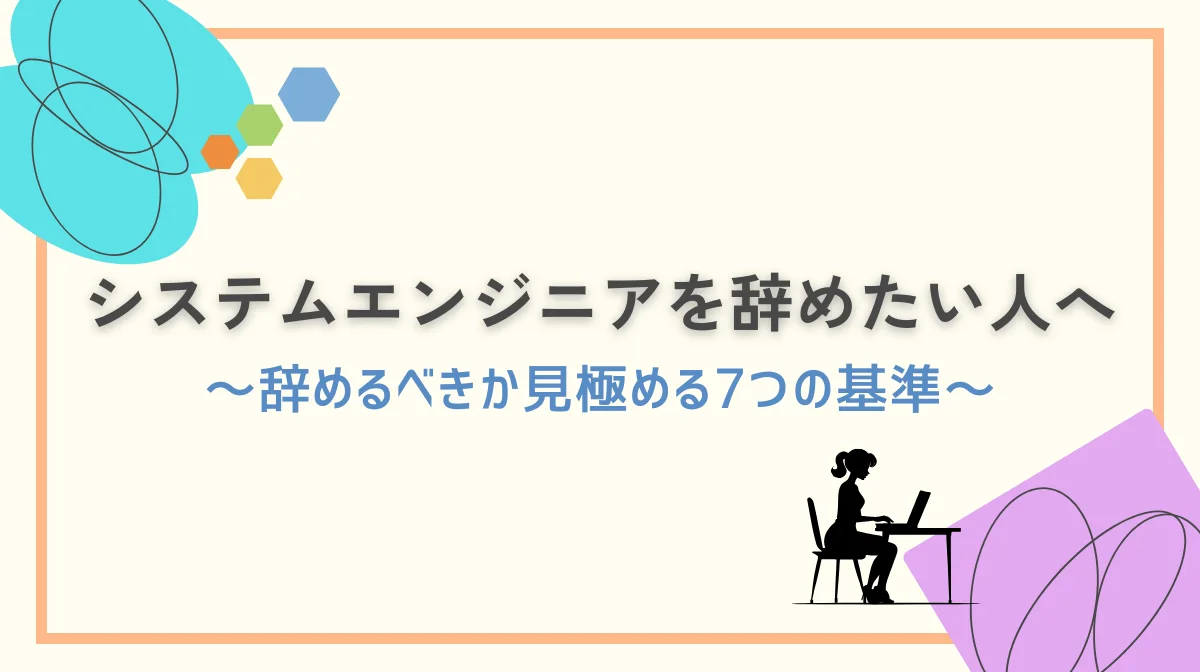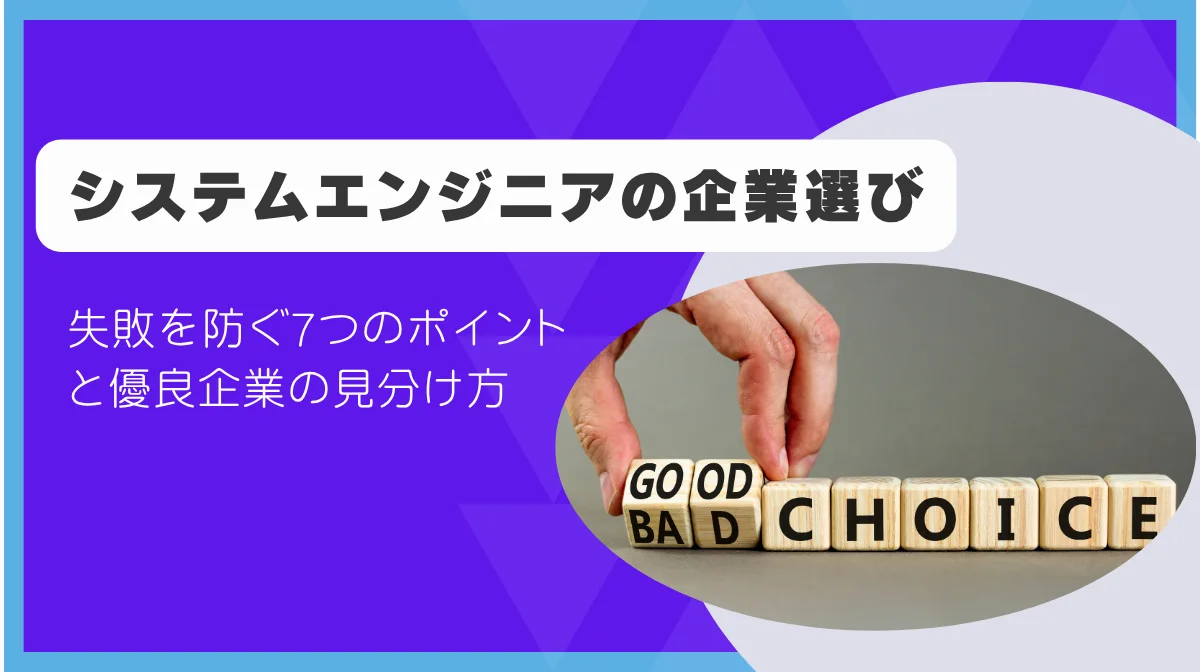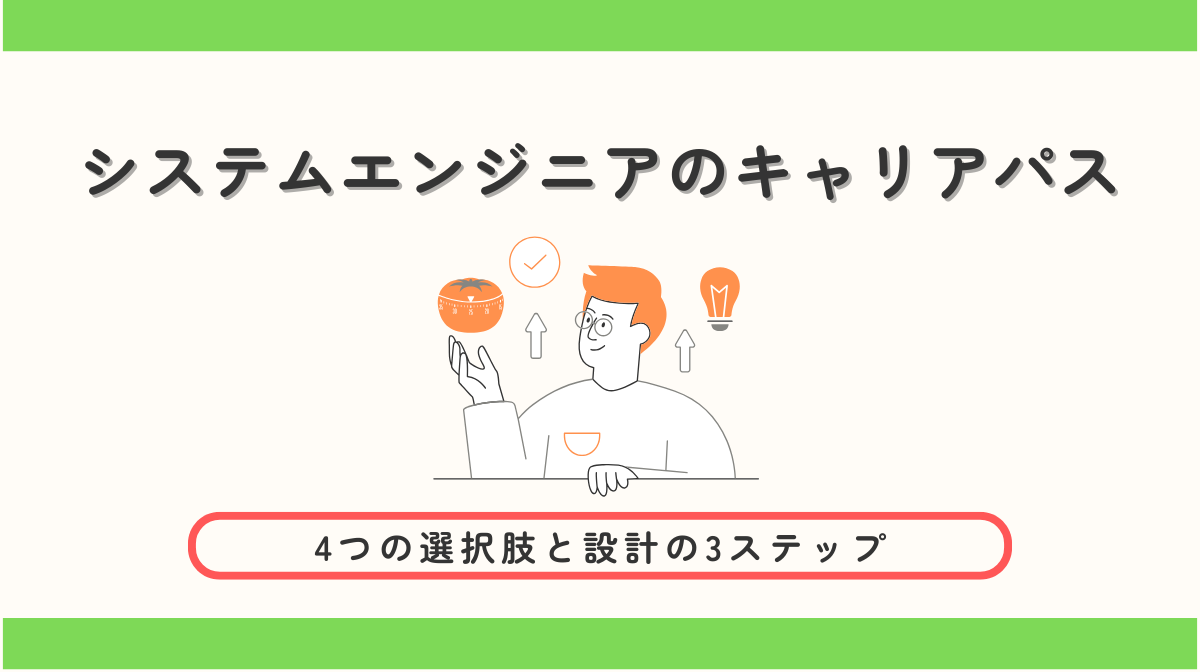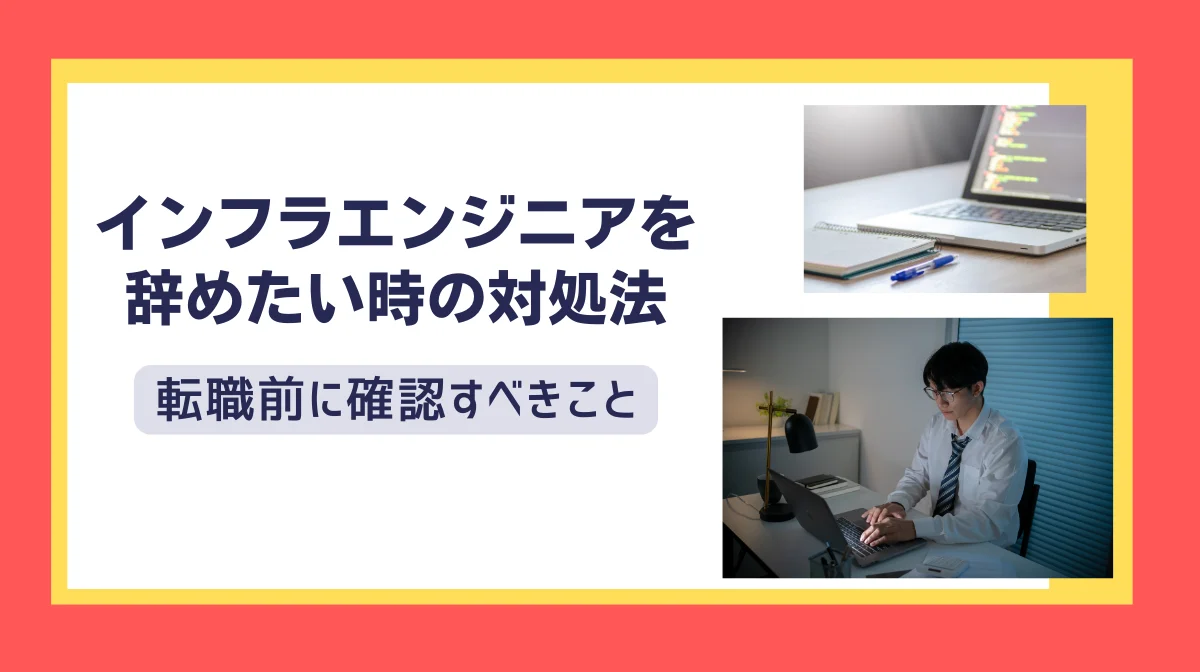Are you a foreign engineer considering a new life in Japan? Japan offers an attractive destination for immigration with its high-quality technology, safe society, and unique culture.
This article provides a comprehensive guide to successful immigration to Japan, from visa acquisition to actual life planning.
Through the experiences of predecessors and concrete steps, we will strongly support your Japan immigration plan.
- The visa requirements and application process for engineers moving to Japan.
- How to secure housing, open bank accounts, and set up daily life in Japan.
- Career paths, salary expectations, and permanent residency options.
1. Why Foreign Engineers Choose to Immigrate to Japan

Japan stands as one of the world’s leading technological powers, making it an attractive immigration destination for many foreign engineers.
The environment where technological innovation and unique culture converge holds great potential for both career development and quality of life.
Transition from Silicon Valley: The Unique Appeal of Japan’s Tech Environment
Compared to global tech hubs like Silicon Valley, Japan’s IT environment offers distinctive attractions.
Japan’s tech industry emphasizes long-term product development and commitment to quality, with a corporate culture rooted in sustainable development rather than rapid growth.
Many foreign engineers choose Japan to escape the intense competitive environment and long working hours of Silicon Valley, seeking a more sustainable career and work-life balance.
In particular, many Japanese tech companies support the technical growth of their employees and provide an environment where engineers can develop their expertise over the long term.
Quality of Life and Work-Life Balance for Engineers in Japan Compared to Europe, America, and Other Asian Countries
Engineer life in Japan stands out in several ways compared to other major tech hubs worldwide. Particularly from the perspective of quality of life and work-life balance, Japan has unique characteristics.
Comparison with America
While salaries are generally lower, the practical difference narrows when considering living costs. Recent work style reforms have strengthened overtime regulations, and employment security is relatively strong.
Comparison with Europe
Japan’s national health insurance system provides universal coverage, and while paid vacation days are fewer, the number of national holidays is among the world’s highest.
Particularly Notable Points
Japan’s excellent public safety and infrastructure development. The environment where you can walk the streets relatively safely 24 hours a day and world-class public transportation systems are major attractions for immigrants.
Current Japanese Tech Industry: New Opportunities for Foreign Talent
Japan’s tech industry has recently begun offering more opportunities for foreign engineers than before, due to accelerated internationalization and digital transformation.
Points Foreign Engineers Should Note
The Japanese government’s digitalization promotion policies. With the establishment of the Digital Agency and various IT promotion measures, demand for tech talent is expected to continue expanding.
Additionally, many major Japanese companies are changing their internal working language to English and advancing environmental improvements to actively accept foreign talent.
Labor shortages due to population decline also present significant opportunities for foreign engineers. Particularly, advanced IT talent is highly valued by Japanese companies, with increasing cases of preferential treatment.
Reference: Digital Agency: Realization of Digital Society
2. Basic Steps for Engineer Immigration to Japan

Immigration to Japan can proceed more smoothly than expected with proper planning and preparation. Here, we explain the basic steps of the immigration process, timelines, and necessary preparations.
How to Plan Your Japan Immigration: Timeline from Preparation to Settlement
Immigration to Japan can be smooth by taking planned steps.
Typical Pre-Immigration Flow
- Start job hunting at Japanese companies and basic Japanese language learning 6-12 months before immigration
- Sign employment contracts and apply for visas 3-6 months in advance
- Obtain visas and secure housing 1-3 months before
Main Post-Immigration Timeline
Within the first month after immigration, complete resident registration at municipal offices, bank account opening, mobile phone contracts, and enrollment in national health insurance.
Ideally, establish living habits and participate in local communities over 3-6 months.
Important Points to Note
It’s crucial to allow sufficient time for the visa application process. Work visa reviews typically take 2-3 months, but may take longer in some cases, so early preparation is essential.
Checklist of Documents and Skill Certifications to Prepare Before Immigration
Immigration to Japan requires preparation of various documents and skill certifications.
Personal Documents
- Passport with at least 6 months validity
- Regulation-size ID photos
- Resume in Japanese format
Educational and Employment History Proof
- University graduation certificate
- Academic transcripts
- Employment certificate
- Career history statement
Skill Certification
- IT-related qualification certificates
- Portfolio
- Activity history on GitHub and similar platforms
Skill certification as an engineer is particularly important. For “Engineer/Specialist in Humanities/International Services” visa applications, either educational background (university graduation, etc.) or over 10 years of practical experience is required.
If you haven’t obtained an engineering degree at university, prepare documents that can prove your IT field practical experience in detail.
Initial Funds and Life Setup Costs Required for Japan Immigration
Immigration to Japan requires certain initial funds.
Pre-Arrival Costs
Airfare (100,000-150,000 yen), visa application fees (approximately 30,000 yen), international moving costs (150,000-500,000 yen if needed).
Housing-Related Costs
Security deposit (1-2 months’ rent), key money (1 month’s rent), agency fees (1 month’s rent), advance rent (1-2 months), furniture and appliance purchases (200,000-500,000 yen).
In Tokyo, rent for single-person studio apartments is typically 70,000-150,000 yen per month. In regional cities, properties from 50,000-80,000 yen are more common.
Overall, it’s safe to secure at least 1 million yen in initial funds, or 1.5-2 million yen for peace of mind.
Other Points to Consider
Also consider living expenses until the first salary payment.
In Japan, end-of-month closing with payment on the 25th of the following month is common, so depending on your arrival timing, it may take 1-2 months until the first salary payment.
■日本でエンジニアとしてキャリアアップしたい方へ
海外エンジニア転職支援サービス『 Bloomtech Career 』にご相談ください。「英語OK」「ビザサポートあり」「高年収企業」など、外国人エンジニア向けの求人を多数掲載。専任のキャリアアドバイザーが、あなたのスキル・希望に合った最適な日本企業をご紹介します。
▼簡単・無料!30秒で登録完了!まずはお気軽にご連絡ください!
Bloomtech Careerに無料相談してみる
3. Japanese Work Visa Guide for Engineers
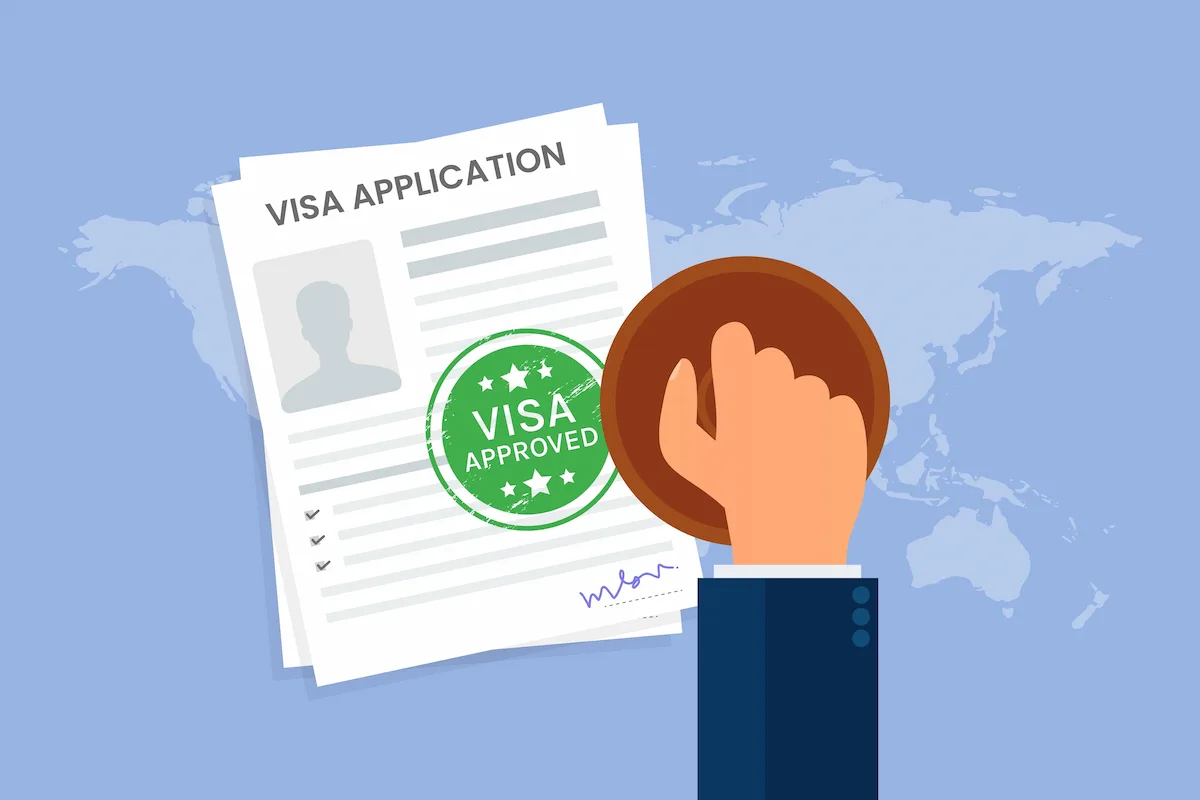
To work in Japan, you need an appropriate work visa. The most common for engineers is the “Engineer/Specialist in Humanities/International Services” visa, but those with advanced expertise may also consider the “Highly Skilled Professional” visa.
Here, we explain the characteristics and acquisition methods of each, as well as examination points, to support smooth visa applications.
Engineer/Specialist in Humanities/International Services Visa: How to Obtain the Optimal Work Visa for IT Personnel
The “Engineer/Specialist in Humanities/International Services” visa is the most commonly issued work visa for foreign technical personnel such as engineers.
Eligible Activities
IT-related technical positions such as system engineers, programmers, and network engineers. The period of stay is initially 1, 3, or 5 years and can be renewed if conditions are met.
Application Eligibility Conditions
- Majoring in related fields at university, junior college, or vocational school (Japanese vocational schools only)
- Having 10 or more years of practical experience
- Holding relevant qualifications such as Information Processing Engineer Examination
Acquisition Procedure
First obtain an employment contract or job offer from a Japanese company, then apply for a Certificate of Eligibility through the employer.
The Certificate of Eligibility is typically issued 1-3 months after application and sent to the applicant. The applicant then applies for a visa at the local Japanese embassy or consulate, with visas typically issued within about 5 business days.
Key Examination Points
“Engaging in work requiring specialized knowledge and skills” and “receiving compensation equal to or higher than Japanese nationals”
Reference: Immigration Services Agency: Engineer/Specialist in Humanities/International Services
Highly Skilled Professional Visa for Privileged Life in Japan: How to Utilize the Points System
The Highly Skilled Professional visa is for foreign personnel with advanced expertise and skills, offering preferential treatment. Examination is based on a points system, with eligibility at 70 points or higher.
Main Benefits
- Preferential period of stay (up to 5 years maximum)
- Relaxed employment restrictions (can work at multiple business locations)
- Easier acquisition of spouse work permits
- Possible accompaniment of parents and domestic helpers under certain conditions
- Relaxed permanent residence permit application requirements (usually 10 years → 1-3 years for highly skilled professionals)
- Priority processing for immigration and residence procedures
Points System
- Education (PhD 30 points, Master’s 20 points, Bachelor’s 10 points)
- Work experience (20 points for 10+ years, 15 points for 7+ years, etc.)
- Annual income (40 points for 10 million yen+, decreasing in stages)
- Age (15 points for under 30, 10 points for 30-34, etc.)
- Japanese language ability (15 points for N1, 10 points for N2)
For Point Acquisition
For engineers, education and annual income are key to point acquisition.
The IT field is particularly recognized as a “specific industrial field” so additional points may be available when joining qualifying companies.
Reference: Immigration Services Agency: Highly Skilled Professional Points System
Engineer-Specific Visa Examination Points and Application Document Preparation
Engineer visa examinations focus on the relationship between education and work, proof of technical expertise, salary levels, and employer company stability.
Confirm these points before application and prepare appropriate documents.
Basic Required Documents
- Certificate of Eligibility application form
- Photos
- Return envelope
- Applicant-related documents (resume, degree certificates, transcripts, work experience certificates, etc.)
- Employer company-related documents (employment contract, company registration certificate, financial statements, etc.)
Important Points
It’s crucial to clearly demonstrate the specific content of engineering work and the applicant’s corresponding skills and experience.
Immigration authorities examine whether the applicant will truly engage in “specialized and technical field” work and whether the work cannot be substituted by Japanese nationals.
4. Qualifications and Experience Required for Immigrant Engineers

Obtaining an engineer work visa in Japan requires appropriate qualifications and experience. Educational requirements are based on studying related fields at universities, junior colleges, or vocational schools, but applications from non-engineering graduates or through practical experience are also possible.
Here, we provide detailed explanations of approaches from various educational backgrounds, specific procedures for proving 10 years of practical experience, and effective methods for demonstrating technical skills that Japanese companies seek.
Education and Majors Valued in Japan: How to Immigrate as an Engineer from Non-Engineering Backgrounds
While related educational background is the most common requirement for obtaining an engineer work visa, there are paths available for graduates from fields other than engineering or information science.
Engineering and Information Science Graduates
This is the most straightforward path, as the relationship between major and IT work is clear, making examination approval easier.
Other Science Graduates (Mathematics, Physics, Statistics, etc.)
Emphasize course records related to programming and analysis, present examples of using IT technology in graduation research or projects.
Liberal Arts Graduates
Can appeal through
- Records of IT-related minors or elective courses
- Proof of programming learning inside and outside university
- IT-related qualification acquisition after graduation
- Short-term internships or practical experience
For Non-IT Field Graduates to Obtain Work Visas
It’s effective to list all IT-related courses from your curriculum and specifically explain examples of IT technology use in graduation research or projects.
Additionally, learning experiences and portfolios outside university, and acquisition of internationally recognized IT qualifications can be appeal points.
Work Visa Acquisition Through Practical Experience: Specific Methods to Prove 10 Years of Experience
When educational requirements aren’t met, visa application eligibility can be obtained through 10+ years of practical experience.
To prove this experience, basic certification documents are needed.
- Employment certificates from each workplace (specifying job content and duration)
- Salary statements and tax-related documents
- Copies of employment contracts
Additional reinforcing evidence materials are also effective
- Work outputs (non-confidential items)
- Overview explanations of involved projects
- Workplace promotion and evaluation records
- Technical blogs and presentation materials
- Activity history on GitHub and similar platforms
- Recommendation letters from supervisors or colleagues
Specific Points for Proving 10+ Years of Practical Experience
- Show consistent career progression chronologically
- Emphasize specific and specialized nature of work content
- Enhance credibility of certification documents
When proving practical experience is difficult (company bankruptcy, etc.), combining indirect evidence such as colleague testimonies, project materials from that time, and media coverage can provide reinforcement.
Note that the 10-year practical experience requirement targets only full-time employee experience; part-time work and internships are typically not counted.
Technical Skills Japanese IT Companies Seek from Foreign Engineers and Proof Methods
Main Skills Japanese IT Companies Seek from Foreign Engineers
Technical Skills
- Front-end development (JavaScript, React, etc.)
- Back-end development (Java, Python, Ruby, etc.)
- Mobile development, infrastructure/operations, data analysis
Soft Skills
- Language skills in English and Japanese
- Team collaboration abilities
Technical Characteristics Particularly Valued by Japanese Companies
“Commitment to quality” and the importance of “documentation” Japanese software development tends to emphasize code quality, testing, and detailed specification creation.
To effectively prove these skills
- Create portfolios showing GitHub achievements
- Acquire technical qualifications like AWS Certified Solutions Architect
- Build online presence through technical blog writing and OSS contributions
- Show quantitative results from past projects
■日本でエンジニアとしてキャリアアップしたい方へ
海外エンジニア転職支援サービス『 Bloomtech Career 』にご相談ください。「英語OK」「ビザサポートあり」「高年収企業」など、外国人エンジニア向けの求人を多数掲載。専任のキャリアアドバイザーが、あなたのスキル・希望に合った最適な日本企業をご紹介します。
▼簡単・無料!30秒で登録完了!まずはお気軽にご連絡ください!
Bloomtech Careerに無料相談してみる
5. Employment Contracts with Japanese Companies | Keys to Successful Immigration

Employment contracts with Japanese companies not only form the basis for visa applications but are also important elements that affect quality of life in Japan.
While the spread of remote work has expanded work style options, visa examinations more strictly evaluate the appropriateness of contract content.
Here, we explain the impact of modern diverse work styles on visas and important points in employment contracts for favorable examination progress.
Japan Immigration in the Remote-First Era: Work Style Options and Their Impact
Since the COVID-19 pandemic, remote work has become widespread in Japan’s IT industry, creating new options for foreign engineers’ work styles.
Current Main Work Styles
- Full office work… common in traditional Japanese companies
- Hybrid work… combining office and home work
- Full remote work… common in tech startups and foreign companies
Impact of Remote Work on Work Visas
In principle, work at the employer’s office is assumed, so explanations are needed when work locations differ from employment contracts.
For remote work, attach explanatory documents about work arrangements and show that the employer has established appropriate work regulations.
Particularly for full remote work in regional areas, verification of “actual employment” may become stricter during visa renewals.
It’s recommended to always prepare materials that can prove actual employment, such as records of regular online meetings and work reports.
Important Points in Employment Contracts for Favorable Visa Examination
Employment contracts are central documents in work visa applications. Basic contract content should include formal employment status (preferably full-time employment), clear contract periods, and presence/absence and conditions of probationary periods.
Job Content Description
Show job duties that clearly demonstrate IT professional expertise, specific positions or roles, and responsible projects or technology stacks.
Salary Conditions
Clarify salary levels equal to or higher than Japanese nationals, payment methods and frequency, and presence/absence of bonuses and various allowances.
Points Particularly Emphasized in Visa Examinations
- Salary levels (equal to or higher than Japanese nationals in similar positions)
- Employment stability (indefinite-term employment contracts are most favorable)
- Professional nature of work (specific description of technology and responsibility scope)
- Company’s acceptance system (presence/absence of Japanese employees in similar positions)
In addition to contracts, attaching materials explaining company overview and business content, organizational charts can more clearly show employment reality and necessity.
Particularly for small and medium enterprises or newly established companies, materials showing company stability and business continuity are also important.
6. Life Foundation Building Guide After Immigration to Japan

Once your immigration to Japan is decided, the next step is building your life foundation. From securing housing to opening bank accounts, mobile phone contracts, and medical insurance enrollment, you need to overcome challenges specific to foreign personnel.
While language barriers and unique systems can be confusing, you can smoothly establish your life by following appropriate preparation and procedures.
Here, we provide practical guides from efficient housing search strategies to utilizing Japan’s medical system.
Housing Security Strategy for Foreign Engineers: From Area Selection to Contracts
Housing search in Japan is one of the most difficult challenges for foreign nationals.
Choosing Where to Live
Consider commuting time from workplace, presence of foreign communities, availability of English-capable facilities, and living costs (rent market rates).
Housing Type Options
- Apartments/Condominiums: general rental housing
- Share houses: low initial costs with community
- Serviced apartments: furnished with easy initial setup
- Weekly/Monthly apartments: convenient for short-term use
Housing Search Methods and Precautions
Housing search methods include real estate agents accommodating foreign nationals, online real estate portals with foreign language support, company housing assistance systems and referral services, and word-of-mouth information through SNS and communities.
Particularly important points in Japanese rental contracts are initial costs including security deposits, key money, agency fees, advance rent, and the guarantor issue. When there’s no guarantor, you can use guarantee companies or have companies serve as corporate guarantors.
For first-time visitors to Japan, we recommend temporarily staying in weekly apartments or serviced apartments, then searching for long-term housing after becoming familiar with Japanese life.
Banks, Mobile Phones, Insurance: Life Infrastructure Setup Steps in Early Immigration
To start life in Japan, basic life infrastructure setup is necessary.
What to Do in the First Week to Month After Arrival
- Resident registration at municipal offices (bring residence card)
- Enrollment in national health insurance
- Procedures to receive My Number notification card
- Mobile phone contracts
- Bank account opening
What to Complete Within the First Month
- Contracts for public services like electricity, gas, water
- Purchase transportation IC cards like Suica
- Credit card applications
Points for Setting Up Life Infrastructure in Japan
Effective measures include choosing banks and mobile phone shops with English-speaking staff, utilizing translation apps, and having Japanese-speaking colleagues or friends accompany you.
Bank accounts are particularly essential for salary receipt, so proceed with opening procedures early. Internet contracts often take 1-2 weeks from application to activation, so consider mobile phone tethering or pocket WiFi rental during this period.
Japan’s Medical System and Engineer Health Management: How to Utilize National Health Insurance
Japan’s medical system boasts world-class quality and universal access, but foreign personnel often struggle to understand and utilize the system.
Types of Japanese Medical Insurance Systems
- National Health Insurance (Kokuho): for self-employed or those not enrolled in company health insurance
- Social Insurance (Health Insurance): for company employees
Immediately after arrival, enroll in Kokuho at municipal offices, then switch to social insurance when joining a company.
Medical Institution Usage, Payments, and Precautions
Medical institution usage includes clinics for general symptoms and regular checkups, general hospitals for specialized examinations and treatments needed, and ambulances for emergencies (phone: 119).
For medical payment, present your insurance card before consultation. Health insurance enrollees pay 30% of medical costs, with the remaining 70% covered by insurance. For high medical costs, the “High-Cost Medical Care System” reduces the burden.
Points for Foreign Engineers Utilizing Japan’s Medical System
- Research medical institutions with foreign language support in advance
- Prepare medical interpretation apps
- Utilize regular health checkups
- Know foreign language-capable psychological counseling services
7. Regional City Immigration as an Option
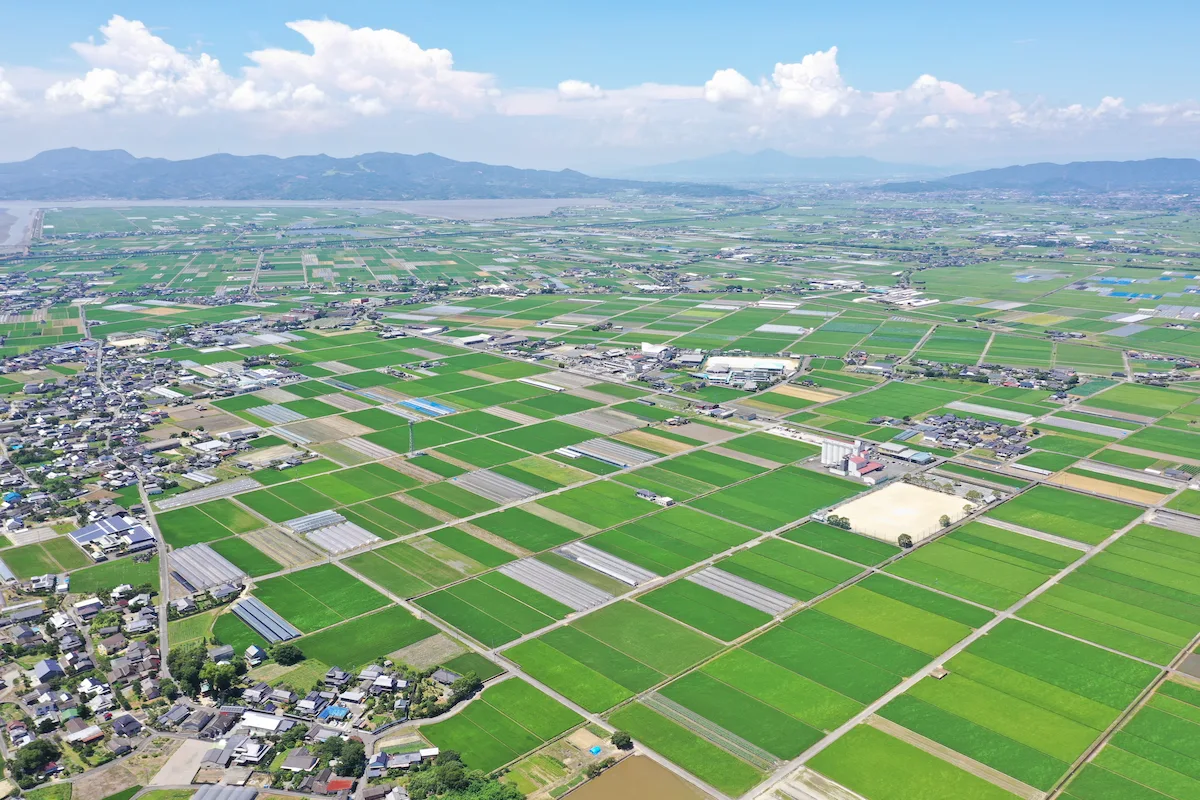
Regional cities outside Tokyo are also becoming attractive options for foreign engineers.
With the rise of regional tech hubs like Fukuoka, Sapporo, and Sendai, the possibility of balancing high-quality work with rich living environments has expanded.
The spread of remote work has made the ideal combination of Tokyo salary levels × regional living costs achievable.
Here, we explain the benefits of regional immigration and immigration cost reduction techniques using municipal support programs.
Fukuoka, Sapporo, Sendai: Rise of Regional Tech Hubs and Foreign Engineer Acceptance Status
Cities outside Tokyo are also forming technology industry clusters (tech hubs). In regional tech hubs, not only local companies but also regional offices of Tokyo-headquartered companies are increasing.
Additionally, with the spread of remote work since COVID-19, engineers living in regional areas while working for Tokyo companies are increasing.
Immigration to regional tech hubs is attractive for improving quality of life while reducing costs. It’s particularly worth considering for nature-oriented engineers or those considering family immigration.
Fukuoka
Characterized as a startup special zone and gateway to Asia, with numerous companies including Line, Mercari Fukuoka Office, and many local IT companies. The foreign community is multinational, centered on Asia, with warm climate and relatively reasonable living costs.
Sapporo
Features excellent living environment, enjoyable winter sports, and serves as North Japan IT company base. Companies like Rakuten, Nippon Steel Solutions, and local IT companies have bases there. The foreign community has relatively many Westerners. Winters are cold but summers are cool and comfortable with rich nature.
Sendai
As the central city of Tohoku with multiple universities and reconstruction demand. Local IT companies and Tokyo company branches are located there. The foreign community is relatively small, centered on international students. Living costs are more affordable than Tokyo, with good balance of nature and urban functions.
Regional Immigration Through Remote Work: The Optimal Solution of Tokyo Salary × Regional Living Costs
With the spread of remote work, the option of receiving Tokyo-level salaries while living with regional low costs and high quality of life has become realistic.
Economic Benefits
Housing costs can be reduced to 1/2 to 1/3 of Tokyo levels, freedom from commuting stress, and improved access to natural environments for better quality of life.
Comparing Tokyo and regional costs, annual living cost reductions of 1-1.4 million yen are possible, equivalent to a practical “salary increase” effect of 20-30% of take-home annual income.
Precautions for Remote Work Regional Immigration
Career considerations include confirming company’s complete remote work policy, ensuring stable internet environment in regional areas, and confirming impacts on promotion and evaluation. Life considerations include medical access and educational environment. Community considerations include methods for local community participation and measures against isolation.
For success, important factors include pre-immigration trial short-term stays for regional confirmation, remote work environment setup, and regular post-immigration evaluation with necessary adjustments.
Remote work regional immigration has the potential to significantly improve engineers’ quality of life, and the key to success is multi-faceted consideration of career, life infrastructure, and social connections.
Immigration Cost Reduction Using Municipal Foreign Talent Attraction Programs
Many Japanese municipalities struggling with population decline implement programs to attract immigrants, including foreign talent.
Examples of Attraction Programs (Support)
Housing support including vacant house banks, housing purchase/renovation subsidies, rent assistance systems; startup subsidies for entrepreneurs, teleworker support, moving expense subsidies; multilingual administrative services; childcare support money.
Notable Municipal Programs for Foreign Talent
- Fukuoka City Startup Visa… provides 6-month residence status exception for startup activities
- Sapporo City UIJ-turn New Employment Support Money… provides up to 1 million yen support money for those immigrating from Tokyo area and finding employment
- Tokushima Prefecture Satellite Office Project… supports IT company regional base establishment
How to Utilize Municipal Programs
Gather information through municipal official immigration support sites, Ministry of Internal Affairs “Immigration and Exchange Information Garden” municipal foreign talent consultation desks, and immigration support portal sites. Conduct advance consultations including confirmation of application timing, advance preparation of necessary documents, and detailed condition confirmation.
Municipal support programs vary greatly by region, but proper utilization can potentially reduce initial immigration costs by hundreds of thousands to over 1 million yen in some cases.
8. Experiences of Foreign Engineers Who Successfully Immigrated to Japan

When considering immigration to Japan, the experiences of predecessors who have actually succeeded provide valuable reference.
How they overcame language barriers, cultural differences, and career building challenges offers numerous lessons through specific experiences.
Here, we introduce success secrets and practical advice through several real examples.
American Senior Developer: From Overcoming Language Barriers to Becoming CTO at a Japanese Company
John Smith from America, holding a Master’s in Computer Science and working as a senior developer at a Silicon Valley tech company, came to Japan in 2010 (age 32) due to interest in Japanese anime and games, desire to transition from Silicon Valley’s competitive environment, and pursuit of long-term quality of life improvement.
Smith’s Career Path
- 2010: Transferred to Tokyo office of foreign company
- 2012: Joined Japanese startup as technical director
- 2015: Acquired Japanese Language Proficiency Test N2
- 2017: Promoted to CTO of same company
- 2020-: Also active as technical advisor for multiple Japanese companies
Overcoming Language Barriers
Initial stage (0-2 years after arrival): Started in English-environment workplace, intensive Japanese learning outside work hours, began participating in Japanese technical communities.
Middle stage (2-5 years after arrival): Moved to bilingual environment company, tried technical communication in Japanese, attempted simple presentations in Japanese.
Development stage (5+ years after arrival): Became capable of technical discussions in Japanese, participated in management meetings in Japanese, attempted Japanese lectures at external events.
Main Success Factors
High technical expertise as AI field specialist, planned and continuous Japanese language learning, effort to adapt to Japanese business culture, presence of continuous mentoring from former Japanese CTO, understanding of decision-making processes specific to Japanese companies.
Advice from Smith
“Continue polishing technical skills as your core value with top priority. Language ability will definitely improve with time. However, without understanding and respecting Japanese corporate culture, you cannot demonstrate true leadership no matter how excellent your technology. It was particularly important to learn the ‘nemawashi’ culture and decision-making processes that emphasize consensus building among everyone”
Indian AI Engineer: Family Immigration to Japan and Building Children’s Educational Environment
Raju Patel from India, holding a Bachelor’s in Computer Engineering and Master’s in AI, worked as an AI engineer at a major Indian IT company but came to Japan in 2018 (age 35) with his wife and children aged 6 and 4, seeking Japan’s safe living environment, children’s educational opportunities, and participation in Japanese companies’ AI research and development.
Main Challenges and Solutions in Family Immigration
Housing selection challenges of few family properties and high initial costs were addressed by utilizing corporate housing assistance systems and starting with company housing.
For children’s education, language barriers and educational system differences were addressed by choosing international school with English environment (weekend Japanese supplementary school) for eldest daughter and local elementary school (Japanese environment “immersion type” learning) for eldest son.
For spouse career continuation, the solution was continuing contracts with US companies through remote work.
Advice from Raju
“Children have surprising adaptability. My son became nearly fluent in Japanese within a year. On the other hand, what’s important as parents is respecting their identity. We value Indian culture at home while supporting integration into Japanese society. Also, education costs are higher than expected, so financial planning should be done with plenty of margin”
European Freelance Developer: From Nomad to Permanent Residence Acquisition
Anna Müller (pseudonym) from Berlin, Germany, is a freelance developer who graduated from art school and self-taught web development.
Her path to Japanese settlement began in 2015 (age 28) when she first came to Japan on a tourist visa and stayed for 3 months as a digital nomad.
Visa Status Transitions
2015: Trial stay on tourist visa → 2016: Foundation building on working holiday → 2017: Work visa acquisition through business contract with Japanese company → 2019: Switch to highly skilled professional visa → 2022: Permanent residence acquisition
Freelance-Specific Challenges and Solutions
Income fluctuation examination challenges were addressed with multi-year income records and long-term contracts with major clients.
Housing contracts used real estate guarantee companies, high national health insurance and pension premiums were handled through optimized expense calculation in tax returns.
Home-based work isolation was solved through participation in coworking spaces and professional communities.
Advice from Müller
“For freelancers to settle in Japan, document and income stability are key. Particularly important is perfect organization of tax-related documents. The sense of security after obtaining permanent residence was greater than expected – it felt like life in Japan truly began”
9. Common Challenges in Japan Immigration and Solutions

Immigration to Japan involves various challenges.
Culture shock due to cultural differences, loneliness arising from language barriers, and anxiety about future career paths are common problems faced by many foreign engineers.
However, these challenges can be overcome with appropriate coping methods and mindset.
Here, we explain adaptation techniques in workplace and daily life, and methods to leverage Japanese experiences for the next step.
Overcoming Culture Shock: Adaptation Techniques in Workplace and Daily Life
Immigration to Japan commonly involves experiencing culture shock due to cultural differences. This appears in stages and can be overcome with appropriate measures.
Stages of Culture Shock
“Honeymoon period” immediately after arrival (freshness and excitement) → “Dissatisfaction/confusion period” around 3-6 months (frustration from language and cultural barriers) → “Adaptation/recovery period” 6 months-1 year (deepening understanding and building new behavior patterns) → “Integration period” 1+ years (forming new self incorporating both home country and Japanese cultures)
Workplace Adaptation Techniques
Important aspects include adapting to indirect expressions and “reading the atmosphere” culture, practicing “reporting, communication, consultation” (horenso), appropriate behavior in meetings and consideration for job positions, understanding significance of drinking parties and company events, and adapting to culture emphasizing “harmony.”
Daily Life Adaptation Points
Life habit adaptation includes understanding garbage separation rules, building appropriate neighborhood relationships, and participating in seasonal events. Additionally, effective strategies include maintaining some home country habits while establishing stress relief methods and regular online interaction with friends and family from home.
Mindset for Success
Important factors include not seeking perfection, setting gradual goals, and having habits of recognizing and celebrating small successes and progress. In most cases, the first year is most difficult, but overcoming this period significantly improves satisfaction with life in Japan.
Repatriation Plans and International Careers: How to Leverage Japanese Experience for Next Steps
Understanding how to leverage Japanese experience for future careers and points to consider when planning repatriation or movement to third countries is important.
Career Value Brought by Japanese Experience
Technically, you can acquire Japanese company-specific quality management methods, manufacturing spirit, and specialized knowledge of specific industries. In business, you gain understanding of Asian markets, transaction experience with Japanese companies, and cross-cultural team management skills. Personally, you develop cross-cultural adaptation abilities, Japanese language skills, and complex problem-solving abilities.
Career Path Options
Three paths exist: long-term career in Japan (stable environment and quality of life), repatriation for career development (cultural comfort and utilizing home country networks), and global career in third countries (diverse experience and international perspective).
Branding Strategy Leveraging Japanese Experience
In resumes, specifically describe project achievements at Japanese companies and emphasize cross-cultural team collaboration experience and Japanese language ability. In interviews, you can use appeal points including Japanese-style quality management experience, understanding of Japanese business culture, and role as bridge between global and local.
Preparation for Repatriation/Third Country Movement
Important aspects include legal procedures (tax filing, pension refund, bank account organization), career preparation (resume updates, company research), and network maintenance (continuing relationships with Japanese colleagues and supervisors, building professional networks through SNS).
10. “Preparation and Knowledge” Are Key Points for Foreign Engineer Immigration to Japan
Immigration to Japan is not difficult if you have advance preparation and correct knowledge.
Understand basic visa application requirements, steadily build life foundations, and enjoy the process of adapting to Japanese culture.
Using the paths built by many predecessors as reference, draw your own success story in Japan. New challenges as an engineer in Japan await you.

